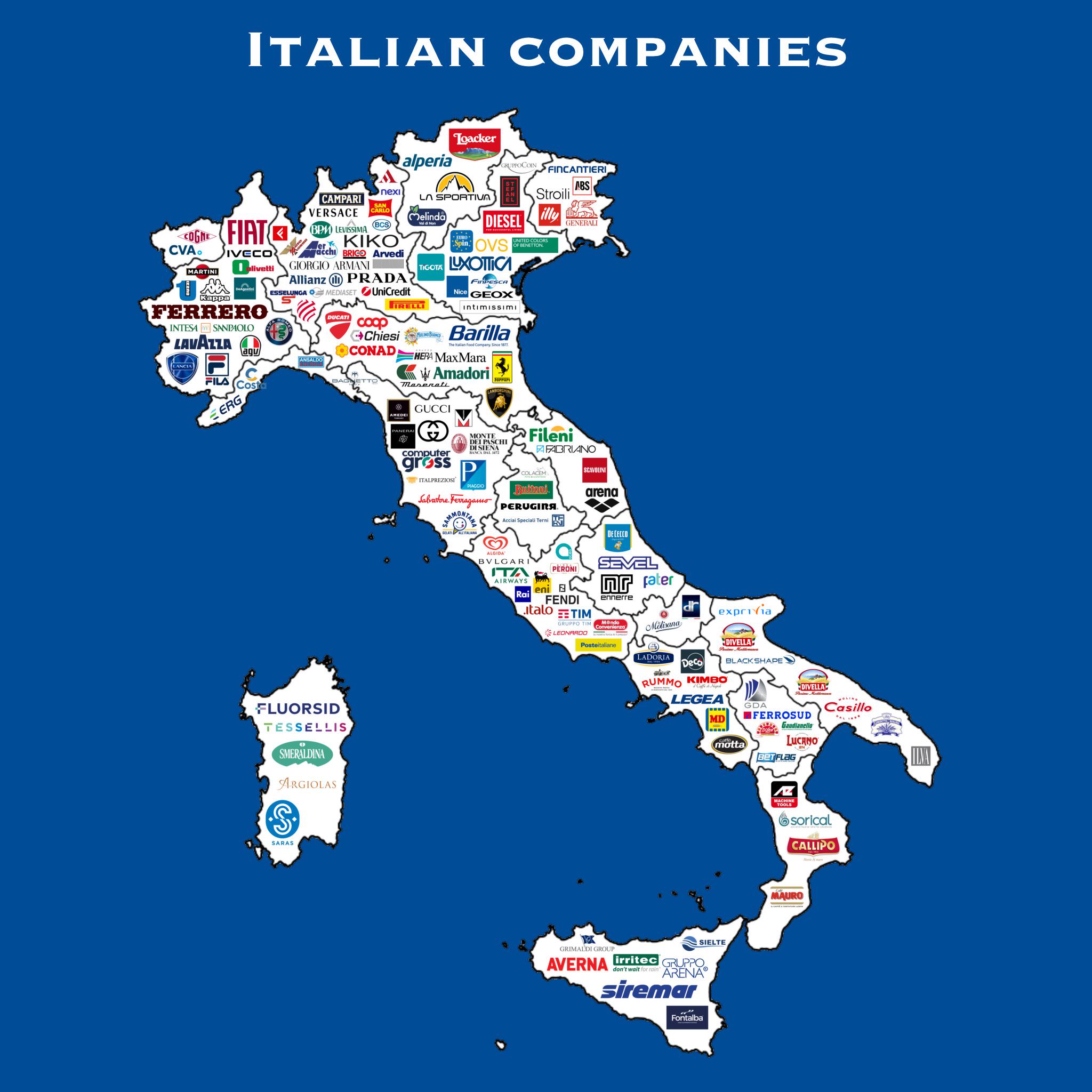Map of Italian Companies by Region


David Chen
Data Visualization Specialist
David Chen is an expert in transforming complex geographic datasets into compelling visual narratives. He combines his background in computer science ...
Geographic Analysis
What This Map Shows
The "Map of Italian Companies by Region" provides a clear visual representation of the distribution and concentration of companies across Italy. This map illustrates how various sectors, such as manufacturing, services, and technology, are spread out across the country, highlighting regional economic strengths and weaknesses. From the bustling streets of Milan, often dubbed the economic engine of Italy, to the quieter yet industrious regions of the south, this map encapsulates the diversity of Italy's corporate landscape.
Deep Dive into Italian Companies
Italy is renowned not only for its rich cultural heritage and gastronomic delights but also for its vibrant economy, which is home to a range of companies that span various industries. The Italian economy is predominantly driven by small and medium-sized enterprises (SMEs), which account for approximately 99% of all businesses in the country. These companies are pivotal in providing employment and fostering innovation.
Interestingly, Italy's industrial fabric is often described as a mosaic, with each region contributing to the overall economic picture. For instance, Lombardy, which includes Milan, is the most industrialized region, hosting a significant concentration of both national and multinational corporations. The region is particularly strong in finance, fashion, and design, making it a global hub for industries that are synonymous with Italian craftsmanship.
In contrast, the regions of Campania and Calabria in the south of Italy face economic challenges, yet they remain rich in potential. Campania is known for its agricultural sectors, including the production of tomatoes and mozzarella cheese, while Calabria boasts a growing interest in local artisan goods. These regions are seeing a gradual increase in entrepreneurial activities, driven by a younger generation eager to innovate and invest in local resources.
Moreover, the map reveals the presence of several industrial districts along the northeast, particularly in Emilia-Romagna, known for its manufacturing prowess, especially in the automotive and machinery sectors. This region is often referred to as the "Motor Valley" due to its rich history of automotive brands like Ferrari and Lamborghini.
Regional Analysis
When examining the map more closely, distinct patterns emerge that highlight regional disparities in business density. For example, the northern regions, including Trentino-Alto Adige and Veneto, exhibit a higher number of companies per capita compared to the southern regions. This discrepancy can be attributed to several factors, including historical industrialization, educational opportunities, and access to infrastructure.
In Emilia-Romagna, the strength of cooperative businesses is particularly noteworthy, with many companies operating within a network of collaboration that enhances their competitiveness. In contrast, the regions of Abruzzo and Molise, while rich in natural beauty and resources, struggle with lower company densities and higher unemployment rates. This highlights the necessity for targeted policies that can bolster economic activity in these less developed areas.
Looking at the coastal regions, such as Liguria, tourism-related businesses thrive, illustrating how geography plays a critical role in determining the types of companies that flourish. The map indicates that areas near the Mediterranean coastline host a high concentration of hospitality and service-oriented businesses, catering to the influx of tourists visiting Italy's stunning landscapes.
Significance and Impact
Understanding the distribution of Italian companies is crucial not only for economic analysts but also for policymakers and business leaders. The information displayed on the map could guide investment decisions, helping to identify regions with growth potential or those requiring support. Moreover, as Italy navigates post-pandemic recovery, recognizing these regional disparities will be vital in implementing effective strategies that promote balanced economic development.
The implications of this data are wide-ranging. For instance, as remote work continues to reshape the landscape of employment, regions traditionally reliant on physical industries may need to adapt by fostering digital innovation and diversifying their economic portfolios. The significance of this map extends beyond mere numbers; it acts as a blueprint for understanding Italy's economic resilience and adaptability in the face of global challenges.
What's fascinating is that as Italy moves towards a greener economy, the map could also evolve to reflect shifts in sustainability-focused companies, particularly in regions rich in renewable resources. In conclusion, the "Map of Italian Companies by Region" serves as a vital tool for comprehending the intricate tapestry of Italy's economic landscape.
Visualization Details
- Published
- September 28, 2025
- Views
- 46
Comments
Loading comments...